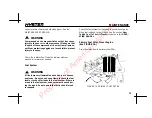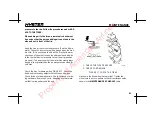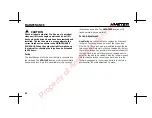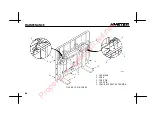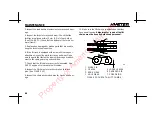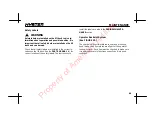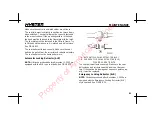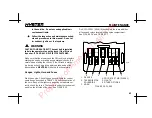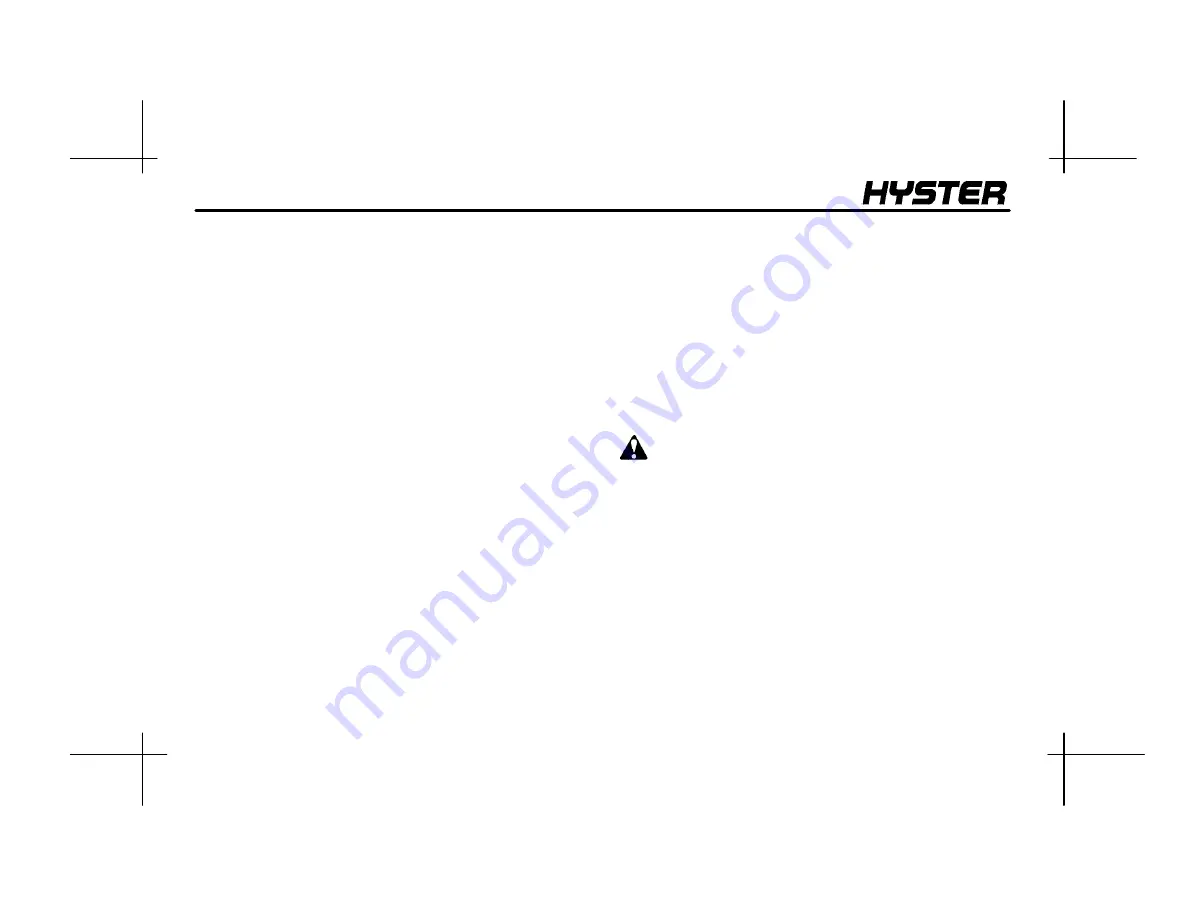
MAINTENANCE
92
When the ELR style seat belt is properly buckled across
the operator, the belt will permit slight operator reposition-
ing without activating the locking mechanism. If the truck
tips over, travels off a dock, or comes to a sudden stop,
the locking mechanism will be activated and hold the oper-
ator’s lower torso in the seat.
A seat belt that is damaged, worn, or does not operate
properly will not provide protection when it is needed. The
end of the belt must fasten correctly in the latch. The seat
belt must be in good condition. Replace the seat belt if it is
damaged or worn.
The following seat belt operation checks must be per-
formed:
•
With the hood closed and in the locked position, pull
the seat belt slowly from the retractor assembly.
Make sure the seat belt pulls out and retracts
smoothly. If the seat belt cannot be pulled from the
retractor assembly or the belt will not retract, re-
place the seat belt assembly.
•
With the hood closed and in the locked position, pull
the seat belt with a sudden jerk. Make sure the seat
belt will not pull from the retractor assembly. If the
seat belt can be pulled from the retractor when it is
pulled with a sudden jerk, replace the seat belt as-
sembly.
•
With the hood in the open position, make sure the
seat belt will not pull from the retractor assembly. If
the seat belt can be pulled from the retractor, with
the hood in the open position, replace the seat belt
assembly.
HOW TO MAKE THE CHECKS WITH THE
ENGINE RUNNING
WARNING
Exhaust from internal combustion engines contains
carbon monoxide and other harmful chemicals. Car-
bon monoxide is a colorless, odorless poison and can
cause unconsciousness or death without warning.
Long term exposure to exhaust or chemicals in the
exhaust can cause cancer, birth defects and other re-
productive harm. Avoid exposure to engine exhaust:
S
Do not use diesel engines indoors where soot
can accumulate.
S
If engines are operated in confined spaces
maintain adequate ventilation or vent exhaust
Property of American Airlines


